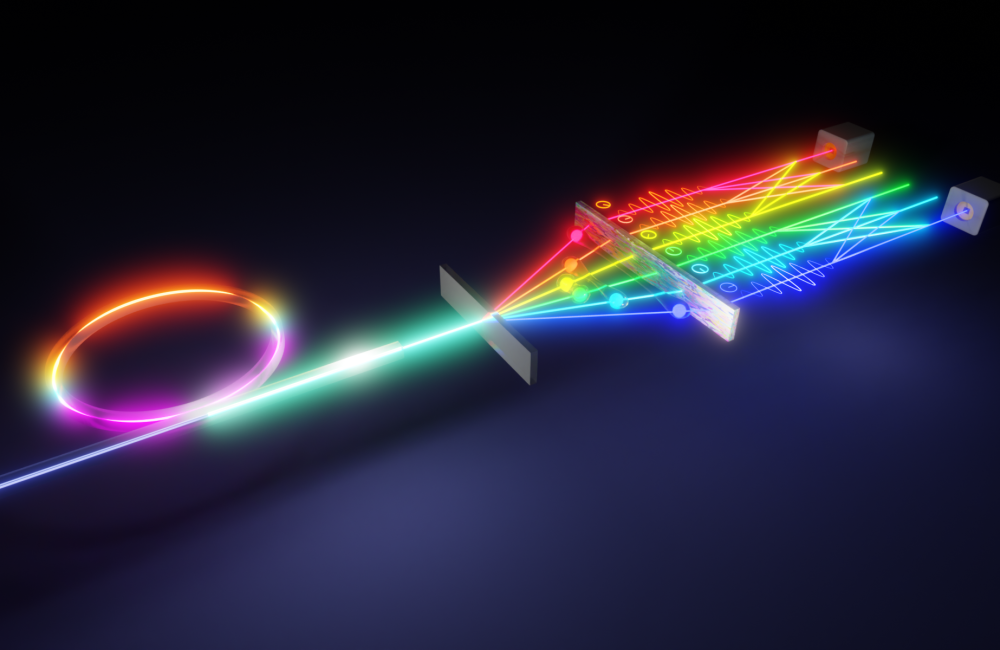
Discovery enables manufacturing of ultrathin solar panels, advanced optoelectronics
By creating a new way for light and matter to interact, researchers at the University of California, Irvine have enable...
Read More

Discovery enables manufacturing of ultrathin solar panels, advanced optoelectronics
By creating a new way for light and matter to interact, researchers at the University of California, Irvine have enable...
Read More
Using existing experimental and computational resources, a multi-institutional team has developed an effective method for measuring high-dimensional qudits encoded in quantum frequency combs, which are a type of photon source, on a single optical chip.
Although the word “qudit” might look like a typo, this lesser-known cousin of the qubit, or quantum bit, can carry more information and is more resistant to noise — both of which are key qualities needed to improve the ...
Read More
A thin device triggers one of quantum mechanics’ strangest and most useful phenomena. An ultrathin invention could make future computing, sensing and encryption technologies remarkably smaller and more powerful by helping scientists control a strange but useful phenomenon of quantum mechanics, according to new research recently published in the journal Science.
Scientists at Sandia National Laboratories and the Max Planck Institute for the...
Read More
Scientists have discovered an elegant way of manipulating light using a “synthetic” Lorentz force — which in nature is responsible for many fascinating phenomena including the Aurora Borealis.
A team of theoretical physicists from the University of Exeter has pioneered a new technique to create tuneable artificial magnetic fields, which enable photons to mimic the dynamics of charged particles in real magnetic fields.
The team believe the new research, published in leading journal Nature Photonics, could have important implications for future photonic devices as it provides a novel way of manipulating light below the diffraction limit.
When charged particles, like electrons, pass through a magnetic field they feel a Lorentz force due to their electric charge, which curves the...
Read More
Recent Comments